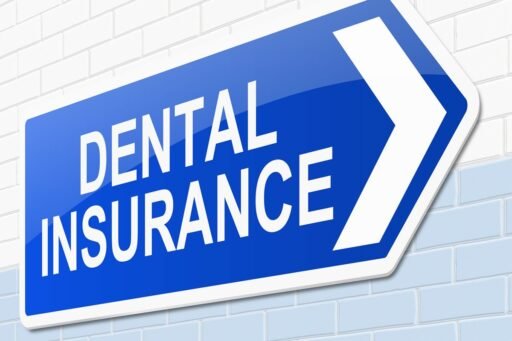Choosing the right dental insurance plan is essential for maintaining good oral health while managing out-of-pocket expenses. With various plans offering different levels of coverage, understanding the details can help you make an informed decision. This article explores the key factors to consider, types of dental plans available, and tips to choose the best coverage that suits your needs.
Understanding Dental Insurance Basics

Dental insurance helps cover the cost of preventive, basic, and major dental services. Most plans follow a 100-80-50 structure, where:
- 100% covers preventive care (cleanings, exams, X-rays)
- 80% covers basic procedures (fillings, extractions)
- 50% covers major services (crowns, root canals, dentures)
Types of Dental Insurance Plans
1. Preferred Provider Organization (PPO)
PPO plans offer a network of dentists who provide services at discounted rates. You can visit out-of-network dentists, but the cost will be higher. PPOs offer flexibility and broader provider options, making them a popular choice.
2. Health Maintenance Organization (HMO)
HMO plans require members to select a primary dentist from an approved network. These plans often have lower premiums and little to no deductibles but limit coverage to in-network providers.
3. Indemnity Plans
Also known as fee-for-service plans, indemnity plans allow you to choose any dentist. The insurance reimburses a portion of the total cost, giving you more freedom but often resulting in higher out-of-pocket expenses.
4. Discount Dental Plans
These are not traditional insurance plans but offer discounted rates on dental services. Members pay a yearly fee to access reduced costs from participating providers.
Factors to Consider When Choosing Dental Insurance

1. Coverage Needs
Assess your dental care requirements, including preventive care, fillings, crowns, or orthodontics. Choose a plan that covers the services you’re most likely to need.
2. Premiums, Deductibles, and Co-Payments
Compare monthly premiums, annual deductibles, and co-payments. A lower premium may come with higher out-of-pocket costs, so balance these factors based on your budget.
3. Annual Maximums
Dental plans often have an annual coverage limit. If you require extensive dental work, choose a plan with a higher annual maximum to reduce personal expenses.
4. Provider Network
Check if your preferred dentist is in the plan’s network. Staying in-network minimizes costs and ensures continuity of care.
5. Waiting Periods
Some plans have waiting periods for major services. If you need immediate dental work, opt for a plan with no or shorter waiting periods.
Evaluating Plan Options Based on Your Needs
For Individuals and Families
If you have a family, look for a plan that covers preventive services for children, orthodontics, and emergency care. Individual plans may focus more on preventive and basic care.
For Seniors
Seniors may require more extensive dental work, such as dentures or crowns. Choose a plan with higher coverage for major services and minimal waiting periods.
For Orthodontic Coverage
If you or your children need braces, ensure the plan offers orthodontic coverage, which is not always included in basic dental insurance.
How to Compare Dental Insurance Plans
1. Review Summary of Benefits
Compare the plan’s coverage percentages, deductibles, and co-pays for different procedures.
2. Check Provider Networks
Ensure your dentist is part of the network to avoid higher out-of-network costs.
3. Understand the Fine Print
Read the policy to identify exclusions, limitations, and waiting periods for specific services.
4. Consider Customer Reviews
Look at customer feedback regarding claim processing and customer service quality to make an informed decision.
Tips for Maximizing Your Dental Insurance Benefits

1. Schedule Preventive Care
Take advantage of fully covered preventive services to maintain oral health and avoid costly procedures.
2. Plan Major Procedures Strategically
If you need expensive dental work, consider spacing treatments over multiple benefit years to stay within annual maximums.
3. Use Flexible Spending Accounts (FSA) or Health Savings Accounts (HSA)
These accounts can help offset dental expenses with pre-tax dollars, reducing your overall cost.
Also Read : The Ultimate Guide To Whole Life Insurance: Benefits, Myths, And Facts
Conclusion
Navigating dental insurance plans involves evaluating your dental care needs, comparing plan options, and considering factors such as coverage limits, provider networks, and premiums. By understanding the different types of plans and their benefits, you can choose the right dental insurance that meets your needs and protects your oral health.
FAQs on Choosing Dental Insurance
1. What type of dental plan is best for families?
PPO plans are often ideal for families because they offer flexibility and a wide network of providers, ensuring comprehensive care for everyone.
2. Are dental discount plans a good alternative to insurance?
Dental discount plans can be beneficial for those who want to reduce costs without paying traditional insurance premiums. However, they may not cover major services.
3. Do all dental plans cover orthodontics?
No, orthodontic coverage is not included in all plans. It’s essential to check if the plan offers orthodontic benefits before enrolling.
4. What should I do if my preferred dentist is out-of-network?
If your dentist is out-of-network, you can either switch to an in-network provider or choose an indemnity plan that allows out-of-network visits.
5. Can I change dental plans mid-year?
Most dental plans require enrollment during open enrollment periods. However, qualifying life events may allow you to make changes outside of this window.


